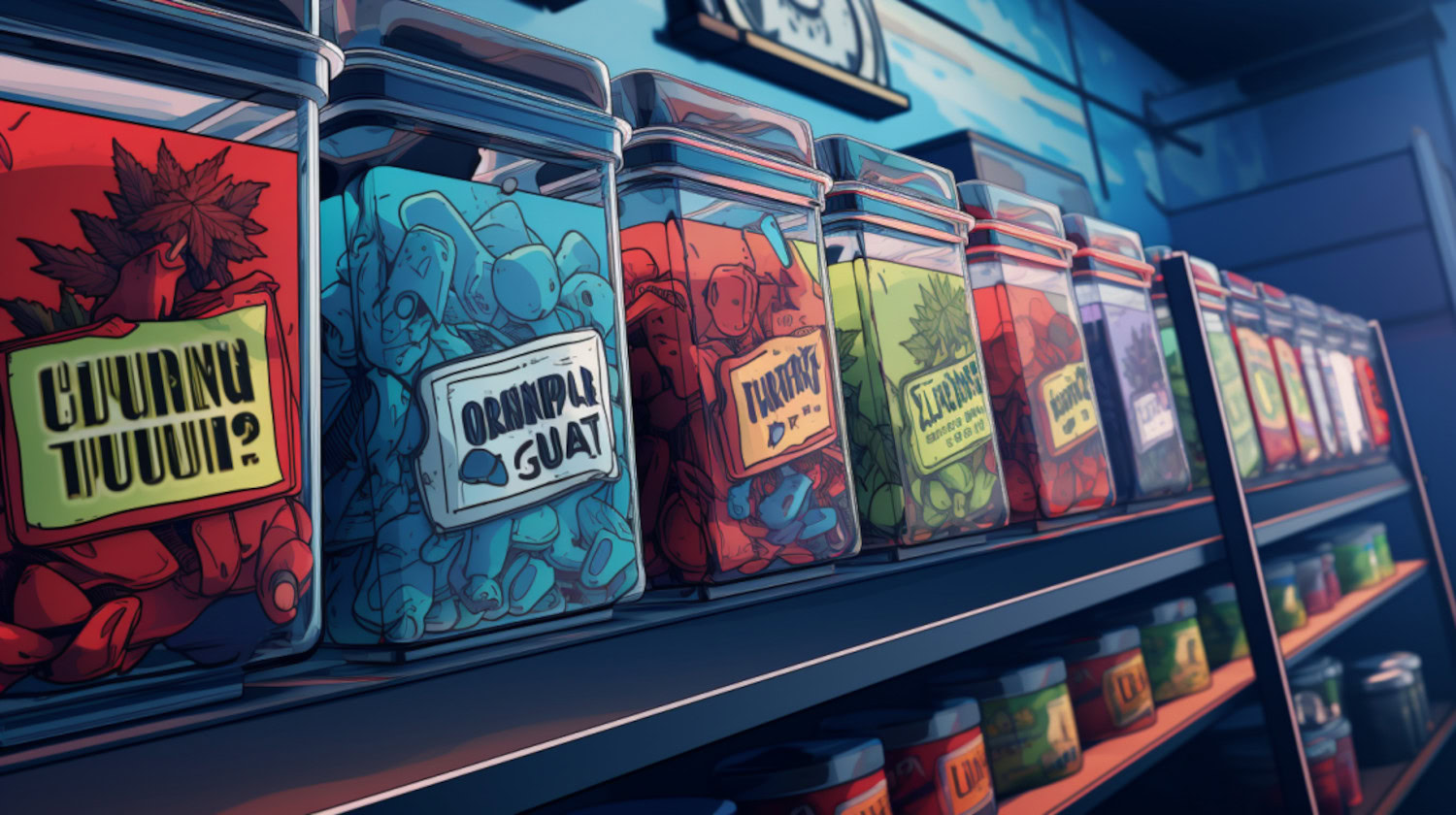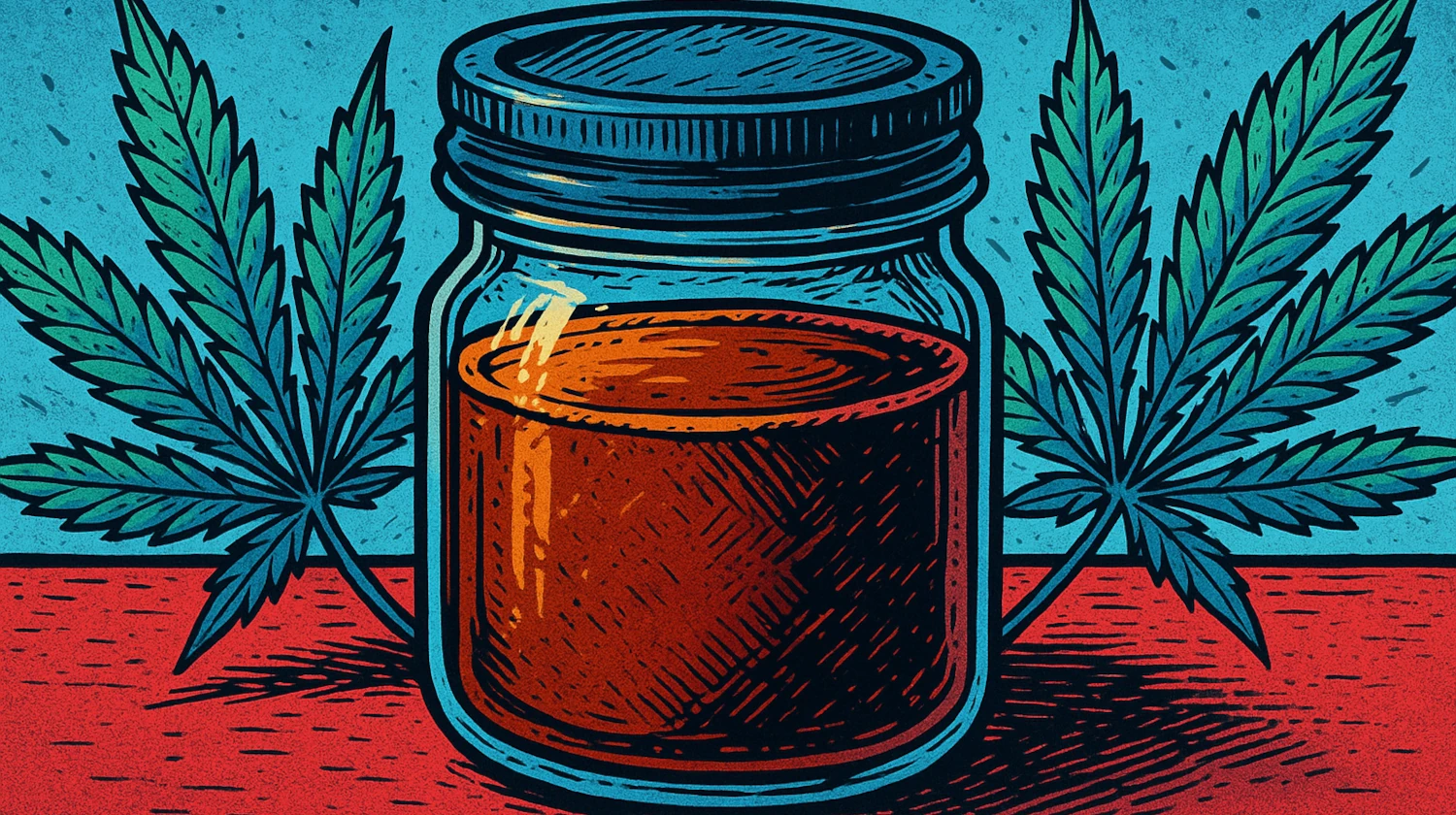Key Takeaways
- Determining the proper dose of THC can be tricky.
- The THC potency of cannabis products can vary by type and manufacturer.
- Resources, including a THC dosage chart, can help you determine the appropriate dose.
Figuring out your preferred THC dosage can be tricky. Every individual reacts differently to cannabis, so the right dosage for one may be too much for another. Fortunately, a THC mg dosage chart can help find the amount that feels just right broken down by mg for easy and consistent dosing. There are some clear guidelines to narrow down an ideal serving size.
What is THC?
THC, or delta-9 tetrahydrocannabinol, is one of a class of compounds known as cannabinoids produced by cannabis plants. As the cannabinoid most responsible for the intoxicating properties of cannabis, determining the correct THC dose can help patients achieve the effects they seek without taking too much.1
The effects of THC can vary by individual and concentration, but people who use cannabis rich in THC generally feel relaxed or euphoric. The compound can also influence mood, making consumers happy and uplifted, or in some cases, anxious or depressed, especially if too much is taken.2 Because of this, it is helpful to use a THC chart or other resources to help determine the most appropriate dose.
What are the Common Concentrations of THC in Cannabis Products?

When trying to determine the right THC dosage, it is important to note that the THC concentration varies by the product type and other factors. The potency of cannabis flower can vary widely by cultivar and growing conditions, with many THC-dominant strains ranging from 15% to 35% THC or more. Kief, which is the collected trichomes from cannabis plants, can be even more potent, with THC concentrations of 40% or higher.
Cannabis extracts and concentrates such as dabs and vape pens are among the most potent products available at dispensaries. Vape cartridges and pens, depending on the manufacturing method and cultivar, can have from 70% to 90% or more of THC. Dabs, including hash, live resin, and THC diamonds, are also known for their potency, with THC concentrations ranging from 45% to 99% THC.
Edibles are foods and beverages infused with THC or cannabis in some way. The potency of cannabis edibles is regulated in most states, with a single serving generally set at 5mg to 10mg of THC. An entire package can have from 100mg to 1000mg THC, making it easy to take too large a dose if care is not taken. Cannabis edibles also include products such as tablets and gel capsules. These products also vary in potency, with tablets and capsules generally ranging from 2.5mg to 25mg THC each.
Cannabis tinctures, which medical cannabis patients often use, are available in a range of potencies to facilitate dosing. However, an entire bottle of a tincture can have as little as 250mg THC, while more potent concentrations can contain up to 5,000 mg THC per package.
It is important to remember that the time it takes to feel the effects of THC can vary by product type. Inhalation methods of ingesting cannabis, such as smoking and vaping, have the quickest onset time, with effects beginning almost immediately.
The THC in edibles, however, must be absorbed in the digestive system before traveling to the liver, where it is metabolized into 11-hydroxy tetrahydrocannabinol (11-OH-THC), a cannabinoid even more potent than delta-9 THC.3 This process takes time, making it easy to accidentally take too much if more edibles are eaten before the original portion takes effect. For this reason, it is important to monitor THC edible dosage to avoid the unpleasant effects of greening out.
The likelihood of taking too much THC from edibles can be reduced or avoided by buying products produced with nanotechnology. These edibles, often gummies or beverages, use a form of THC that is easily absorbed, reducing the onset time and the risk of taking more before the effects kick in.
To reduce the risk of taking too much THC with inhalation consumption methods, consider vaping or smoking cannabis flower instead of dabbing cannabis concentrates or using a vape pen. Either way, utilizing a THC dosage chart may make it easier to narrow in on how many puffs you should take.
What's the Best Place to Start With THC Dosage?
Many factors go into determining the ideal dose of THC, including the type of product and the user’s experience with cannabis. Those who have used cannabis regularly or frequently may need a higher dose or perhaps even take a tolerance break to achieve the desired effect.
Patients new to cannabis are advised by cannabis experts to “start low and go slow” to help them determine dosage. This way, they are less likely to experience the potentially unpleasant effects of taking too much.
Generally, cannabis experts recommend a starting dose of 2.5-5mg THC. After taking that starting dose, wait to determine its effect before taking more. If smoking or vaping, wait at least 15 minutes to determine how the starting dose affects you. Then, if needed, take another 2.5mg to 5mg dose and wait another 15 minutes to see if you’ve achieved your desired effect.
Determining the proper THC dosage with edibles can be trickier because of the longer time it takes to feel their effects. After taking an initial starting dose of 2.5mg to 5mg THC, wait at least one to two hours before deciding to take more.4
Medical cannabis is generally considered safe. However, some prescription medications can interact with cannabis and produce undesirable or potentially dangerous effects.5 Patients considering medical cannabis should consult with a qualified physician to help them determine the right dosage.
What's the Right THC Dose for Me?
Every person is different, and everybody’s endocannabinoid system responds to THC differently, so it isn’t possible to give a standard THC dosage recommendation that’s appropriate for everyone.
The titration process is based on the recommendation to “start low, go slow.” Begin with the lowest possible dose and then wait to determine how the initial dose affects you and your symptoms before increasing your dosage.
It is important to remember that cannabis products are not one-size-fits-all, and it may take some trial and error before finding the correct dosage. Below, we provide a simple chart to help guide you on your journey to finding the right dosage based on the product type.
THC mg Dosage Chart
The chart below breaks down common products and dosages for various tolerance levels by mg of THC. If you're unsure where you fall on the chart, go with the lower option.
| Cannabis Product Type | Beginner Dosage | Moderate Dosage | High Dosage |
| Cannabis Flower | 1 to 2 puffs (~10mg - 20mg) | 3 to 4 puffs (~30mg - 40mg) | 0.5g to 1 gram - 25% (250mg/g) |
| Cannabis Concentrates | 0.025g serving size or less (75% - 750mg/g) ~ 18mg - 20mg per dab | 0.05g serving size (75% - 750mg/g) ~ 36mg - 40mg per dab | Over 0.05g serving size (75% - 750mg/g) ~ 36mg - 40mg per dab |
| Cannabis Edibles | 2.5mg to 5mg | 10mg - 25mg | 25mg+ |
| Cannabis Tinctures | 2.5mg to 5mg | 10mg - 25mg | 25mg+ |
How to Get the Right THC Dose

A THC dosage chart can make it easy to figure out how much of a particular cannabis product you’ll need to achieve the appropriate dose. You can also calculate THC dosage more precisely by using the lab testing data that is available for most regulated cannabis products, typically provided on product packaging. This information, known as a certificate of analysis (COA), usually includes the percentage of THC and how many milligrams of THC are contained in the entire package.
Use the COA and product packaging information to determine the proper dose. For example, 1 gram of 20% THC cannabis flower has roughly 200 milligrams of THC or less after accounting for loss during decarboxylation. With some math, you can determine that a 10mg dose of THC will require 0.05 grams of cannabis. You can then use a digital scale to weigh out the cannabis flower for each dose.
Achieving a precise dosage is often easier with products such as RSO syringes or tinctures, which generally have scored markings on the syringe or dropper. Use this information with the THC percentage listed on the COA to calculate the milligrams of THC in a particular dose.
Cannabis edibles usually have the amount of THC per serving and the total amount of THC listed on the package, making it easy to divide the product into desired serving sizes. Some states require multi-serving packages to indicate the serving size by scoring the product with markings, simplifying the process. Use caution with all edibles, including foods, beverages, and capsules. Wait up to two hours before taking another dose to avoid consuming too much.
Once you know your dose, you can find how much of a particular product to take by using a THC dosage chart or the product packaging. When dosed carefully, patients enjoy the maximum benefit of cannabis without the unpleasant effects of taking too much.
References
- Radwan MM, Chandra S, Gul S, ElSohly MA. Cannabinoids, Phenolics, Terpenes and Alkaloids of Cannabis. Molecules. 2021; 26(9):2774. https://doi.org/10.3390/molecules26092774
↩︎ - Martin-Santos R, Crippa JA, Batalla A, et al. Acute effects of a single, oral dose of d9-tetrahydrocannabinol (THC) and cannabidiol (CBD) administration in healthy volunteers. Current pharmaceutical design. 2012;18(32):4966-4979. doi:https://doi.org/10.2174/138161212802884780
↩︎ - Barrus DG, Capogrossi KL, Cates SC, et al. Tasty THC: Promises and Challenges of Cannabis Edibles. Methods Rep RTI Press. 2016;2016:10.3768/rtipress.2016.op.0035.1611. doi:10.3768/rtipress.2016.op.0035.1611
↩︎ - MacCallum CA, Russo EB. Practical considerations in medical cannabis administration and dosing. European Journal of Internal Medicine. 2018;49(49):12-19. doi:https://doi.org/10.1016/j.ejim.2018.01.004
↩︎ - MacCallum CA, Lo LA, Boivin M. “Is medical cannabis safe for my patients?” A practical review of cannabis safety considerations. European Journal of Internal Medicine. 2021;89:10-18. doi:https://doi.org/10.1016/j.ejim.2021.05.002
↩︎
The information in this article and any included images or charts are for educational purposes only. This information is neither a substitute for, nor does it replace, professional legal advice or medical advice, diagnosis, or treatment. If you have any concerns or questions about laws, regulations, or your health, you should always consult with an attorney, physician or other licensed professional.




